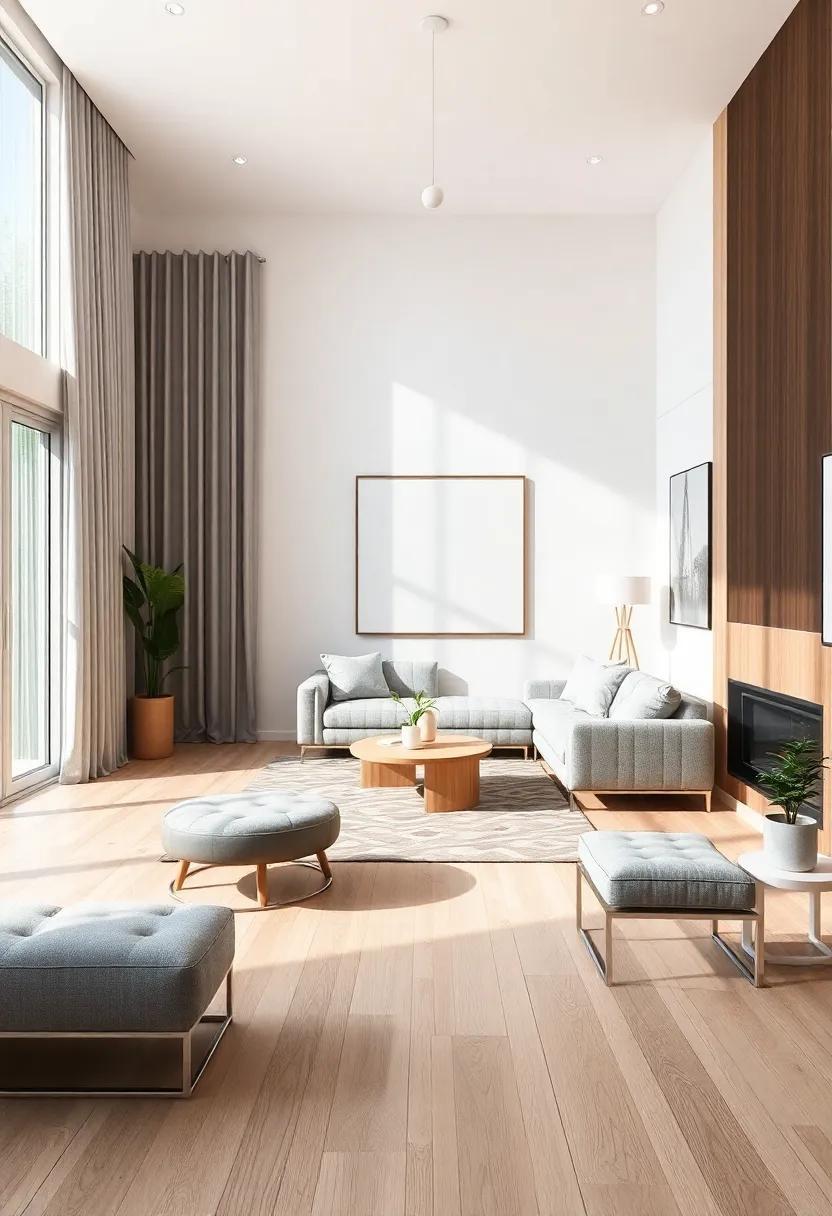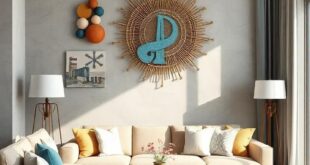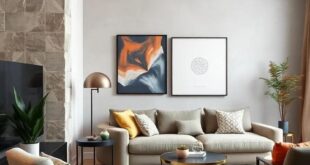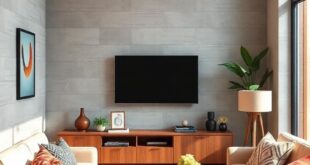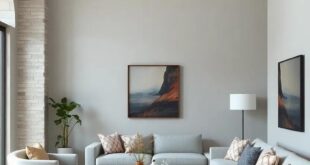In an era where urban living frequently enough means compromising on space, the art of designing a welcoming and functional home takes on new dimensions—quite literally.Enter the small open-concept living room, a canvas of possibility where every inch counts, and creativity knows no bounds. With light wood floors setting a warm foundation, this design approach ensures that spaces not only feel larger but also invite warmth and comfort into the heart of yoru home. Join us as we explore the essentials of embracing space through strategic layout, clever furnishings, and a harmonious color palette, all while making the most of the captivating allure that light wood flooring provides. Let’s transform your compact living area into a sanctuary of style, functionality, and serenity.
Embracing Light and airiness in Open-Concept Living Spaces
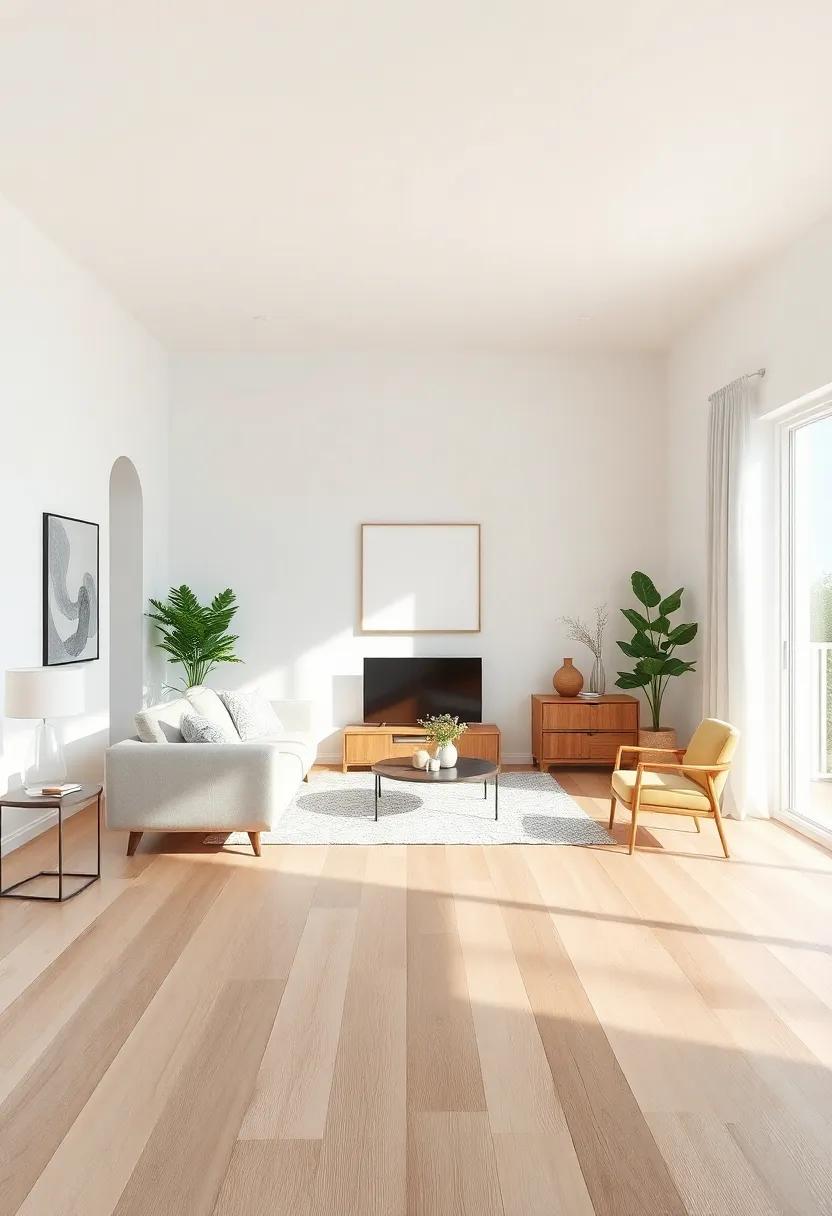
In the quest for a tranquil and refreshing atmosphere, open-concept living spaces benefit greatly from a design approach that prioritizes light and airiness. One of the most effective ways to achieve this is through the choice of materials. Light wood floors not only create an inviting foundation but also reflect natural light,making the room feel larger and more spacious. To enhance this effect, consider incorporating large windows or glass doors that allow sunlight to flood the space, offering a seamless connection with the outdoors. Soft, neutral wall colors can further amplify this airy feeling, creating a harmonious and calming surroundings.
Moreover, the strategic use of furnishings and decor can emphasize the open layout while maintaining a sense of flow. Opt for multifunctional furniture such as a light, sleek coffee table or a sectional sofa that encourages easy movement. Keep the decor minimalistic by selecting a few statement pieces that draw the eye upwards,such as tall plants or artwork. Here are some additional tips to consider:
- Use Mirrors: Incorporate mirrored surfaces to reflect light and create an illusion of depth.
- Opt for Lighter Textiles: Select airy fabrics for curtains and cushions to enhance the overall brightness.
- Maintain a Cohesive Color Palette: Stick to pale, earthy tones to connect various zones of the room.
The Warmth of Light Wood Floors in Cozy Living Room Designs
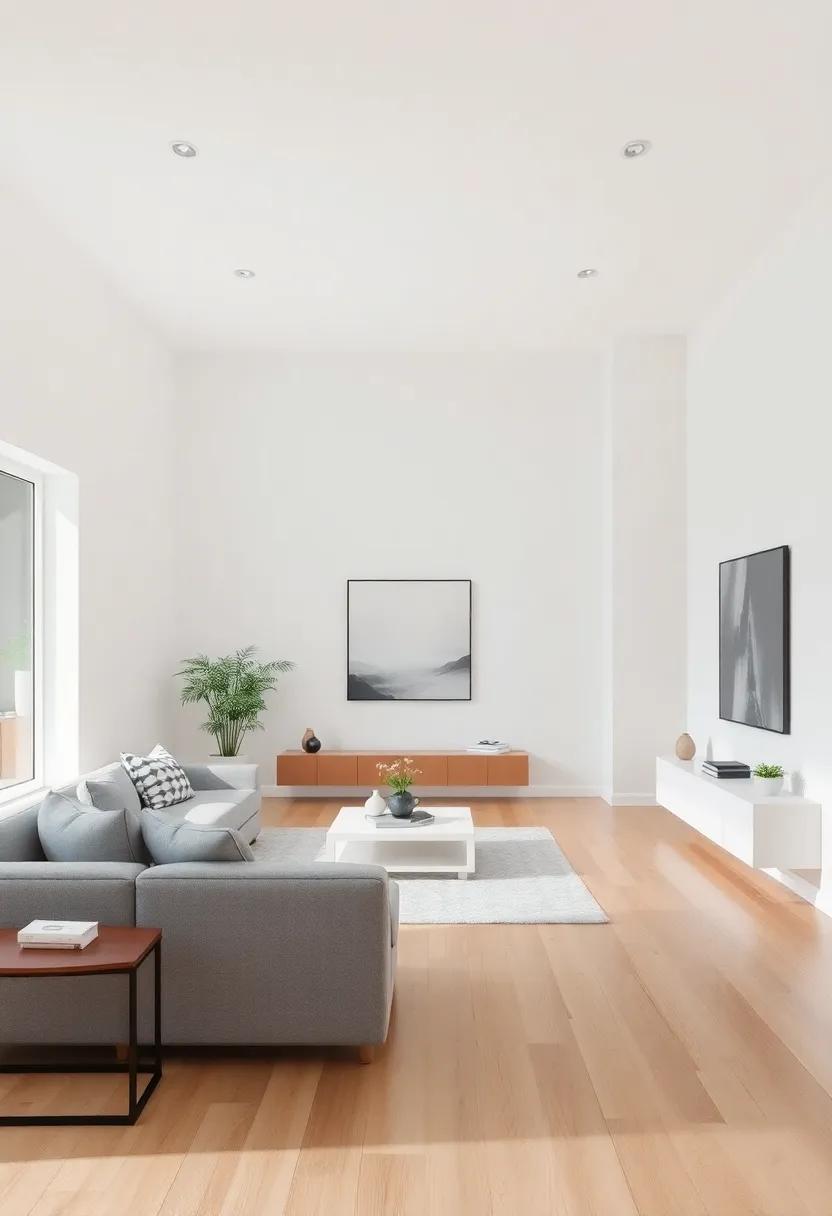
Imagine stepping into a living room where the gentle glow of light wood floors instantly captures your attention, radiating warmth and inviting you to unwind. This type of flooring creates a seamless connection with the surrounding decor, enhancing the open-concept design. The natural hues of light wood not only expand the visual space but also exude a sense of tranquility that is ideal for small living areas. With its ability to reflect natural light,the wood flooring brightens up the room,making it feel airy and expansive. Whether your design leans modern, rustic, or eclectic, light wood floors provide a versatile backdrop that harmonizes beautifully with various color palettes and styles.
To further amplify the cozy atmosphere of your living room, consider pairing your light wood floors with complementary elements. Here are a few suggestions to create a warming effect:
- Textured Rugs: Layer soft area rugs that add depth and comfort.
- Warm Accents: incorporate throws and cushions in earthy tones.
- Natural Materials: Use furniture made of wood or wicker to echo the flooring.
- Soft Lighting: Introduce lamps and fixtures that cast a warm, inviting glow.
Creating Seamless Transitions Between Living and Dining Areas

To create a fluid connection between the living and dining areas, consider using consistent color palettes and materials that unify the two spaces. Light wood floors serve as an excellent foundation, enhancing the brightness and airiness of the entire area. By selecting furniture that complements this flooring, such as upholstered pieces in soft, neutral tones, you can establish a harmonious flow. Key elements to enhance this integration include:
- Open shelving: Use lightweight open shelves that can display decorative items while allowing sightlines to continue unobstructed.
- Area Rugs: Define each space visually without creating physical barriers; select rugs that echo the wood tones.
- Harmonious Lighting: Use similar light fixtures or strategically placed lamps that bridge the two areas.
Incorporating flexible furniture can further enhance the dynamism between the living and dining zones. Opt for pieces that are lightweight and mobile,allowing for a rearrangement as needed. An inviting dining table that doubles as a workspace offers functionality without sacrificing aesthetics. An appealing combination could look something like this:
| Furniture Piece | Functionality | Style |
|---|---|---|
| Extendable dining table | dining & workspace | Minimalist design |
| Modular sofa | Seating & lounging | Contemporary |
| Accent chair | Additional seating | Textured fabric |
Color Palettes that Enhance the Spacious Feel of Small Rooms
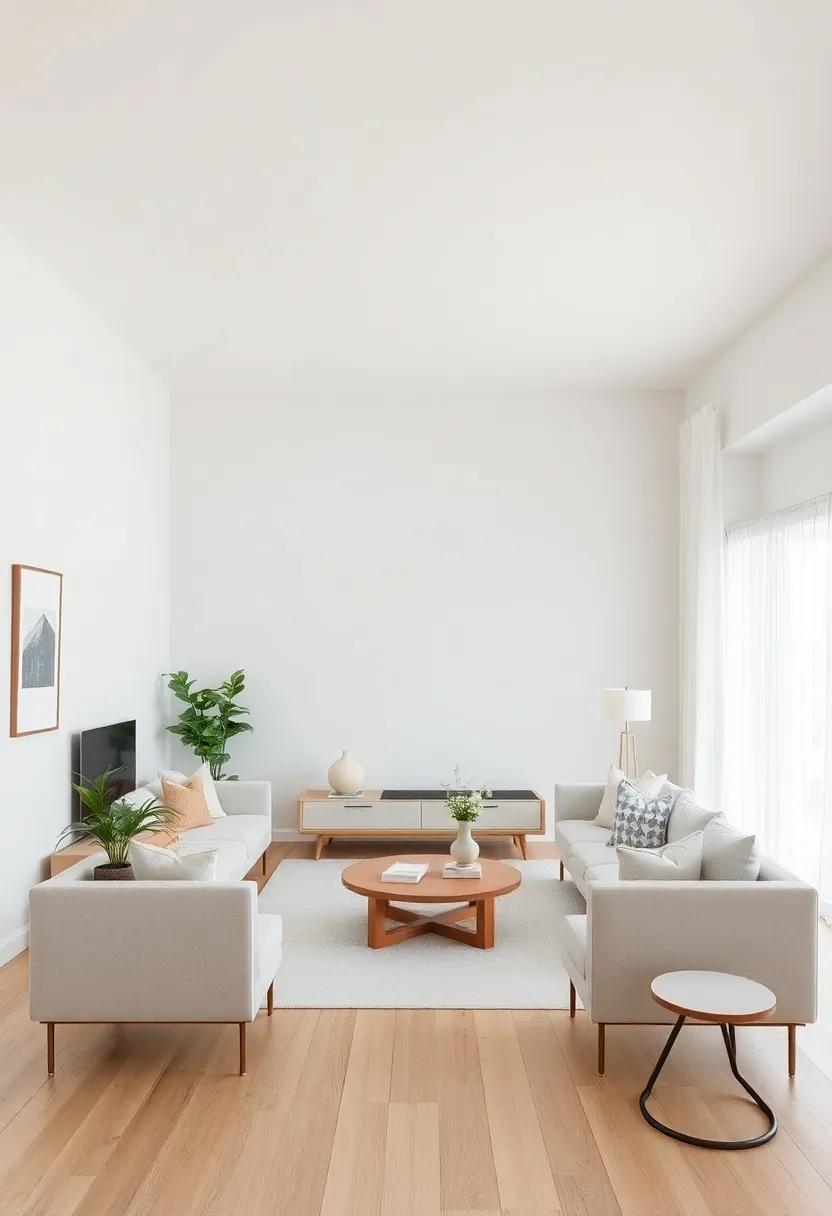
Choosing the right color palette is essential for fostering an airy ambiance in compact living spaces. Light hues, such as soft whites, pale grays, and gentle pastels, can create a sense of openness and invitation. Consider using accent colors to bring depth without overwhelming the space. Subtle shades of sky blue, mint green, or blush pink can enhance the lightness of your open-concept area while maintaining a cohesive and serene aesthetic. These selections not only reflect natural light but also enliven your surroundings, creating a tranquil retreat.
To harmonize with light wood floors, a well-thoght-out color strategy can yield stunning results. Pairing light wood with the right palette can further magnify the desired spaciousness. Incorporate elements such as
- Soft Creams - to maintain a fresh look.
- pale Blues – for a breezy coastal vibe.
- Mint Greens – to inspire tranquility.
- Dusty Rose – for a touch of warmth.
By balancing these hues throughout your decor, you can create a unified and harmonious environment that not only appears larger but also feels welcoming.Meeting textures and colors harmoniously encourages an effortless flow, making the most of every corner in your small space.
Incorporating Natural Light to Brighten Your Open Living Concept
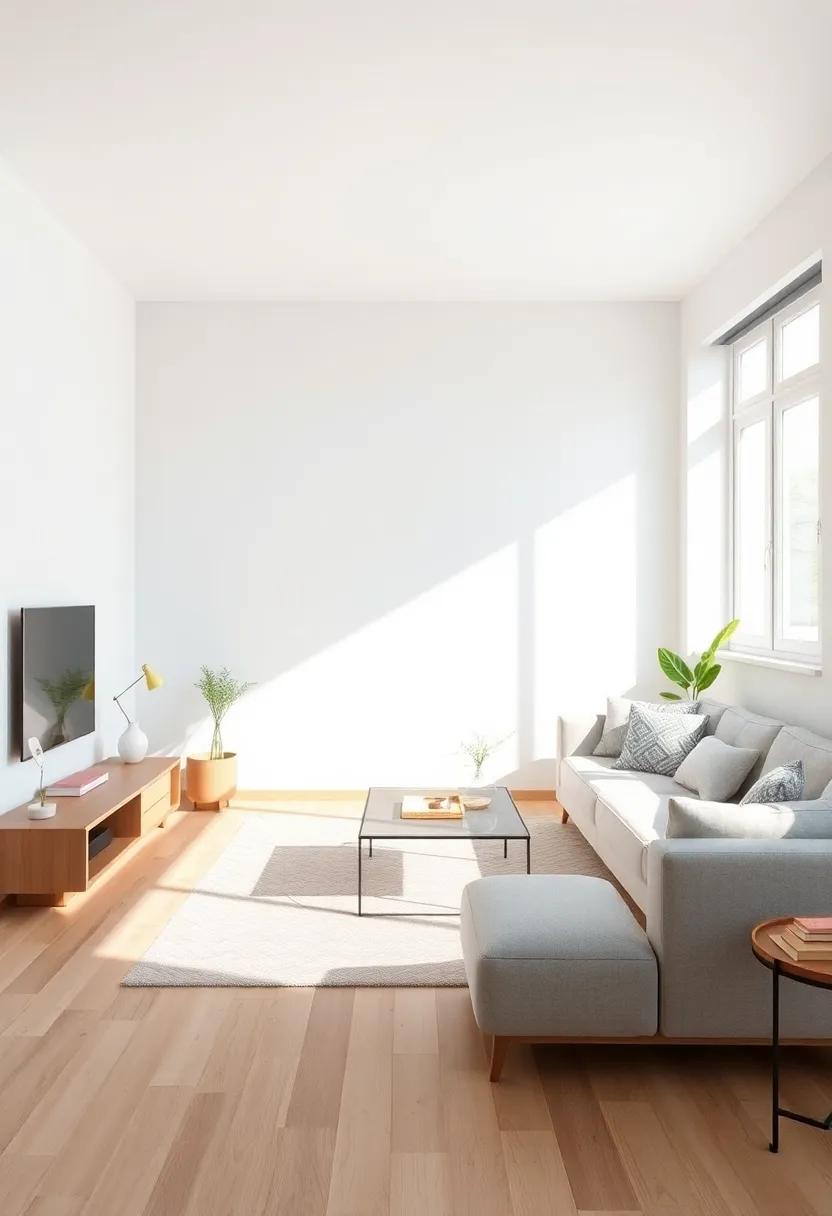
Natural light can transform a small open living space into a radiant and airy refuge, creating an inviting atmosphere that maximizes every square inch. To capitalize on sunlight, consider the placement of large windows or sliding glass doors that seamlessly connect your indoor space with the outdoors. Incorporating features like skylights can also flood your room with natural light, especially in areas that may not have exterior walls. In addition, using light-weight, sheer curtains allows sunlight to filter through while maintaining privacy, softening shadows without blocking the view.
To enhance the effect of natural light, choose colors and materials that reflect and disperse light efficiently. Incorporate surfaces like glossy finishes for furniture or walls that catch and bounce light, while employing a muted color palette can make the space feel larger and more open. Create cozy corners with strategically placed mirrors, which can amplify the light. For added charm, consider adding indoor plants, which not only improve air quality but also bring a touch of nature indoors, creating a harmonious balance with the natural light.
Furniture Choices That Maximize Space and Comfort in Small Areas
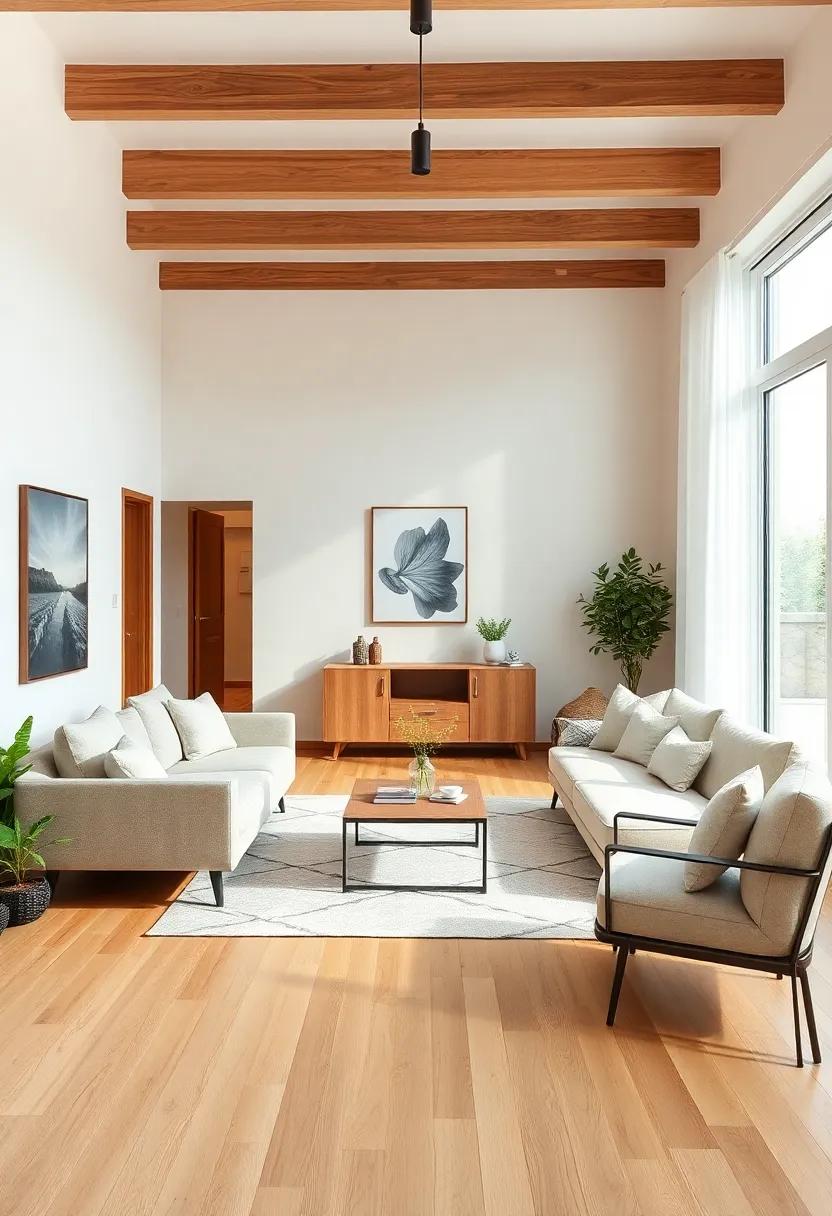
In a small open-concept living room, selecting the right furniture can transform the space into a haven of comfort and functionality. Multi-purpose furniture is your best ally—look for pieces like a sofa bed or a storage ottoman that serve multiple roles without sacrificing style.Consider slim profiles and clean lines to avoid overwhelming the room. For seating, opt for lightweight chairs that are easy to move, allowing for a flexible layout that can adapt to various activities, whether it’s hosting friends or enjoying a quiet night in. Additionally, choose furniture with legs that expose the floor underneath, creating an illusion of more space.
Another essential aspect is utilizing vertical space to maximize storage and aesthetic appeal. Wall-mounted shelves can display decor while keeping the floor clear. Consider a small console table against the wall for an elegant touch, which can also store items out of sight. Below is a simple table that highlights some ideal furniture choices for small spaces:
| Furniture Type | Benefits |
|---|---|
| Sofa Bed | Dual function for seating and sleeping |
| Storage Ottoman | Extra seating and hidden storage |
| Wall-Mounted Shelves | Increased storage without floor clutter |
| Lightweight chairs | Easy to rearrange for functionality |
Exploring Multi-Functional Furniture for Effective Space Utilization
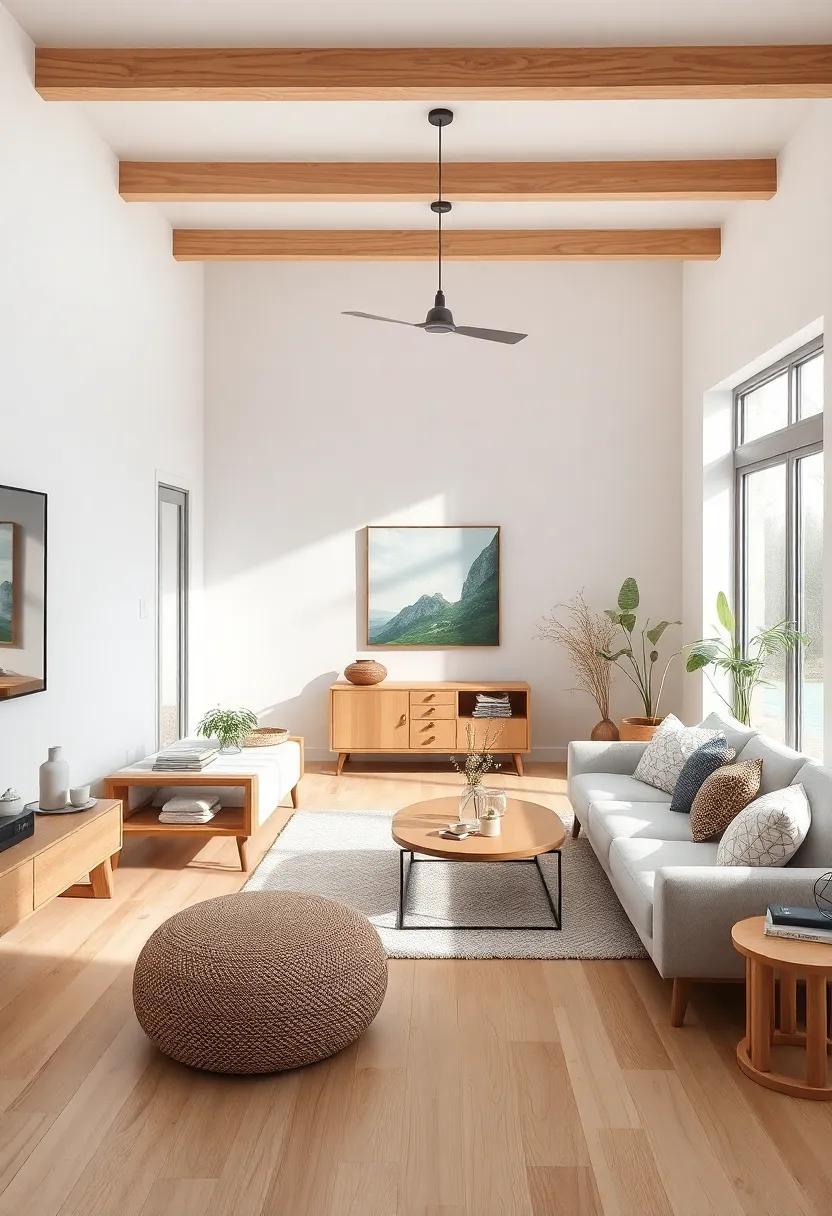
In the quest to maximize the utility of a compact living space, multi-functional furniture emerges as a key player. By ingeniously blending style and purpose, these versatile pieces can transform a small open-concept living room into a haven of comfort and functionality. Consider incorporating items such as:
- Convertible sofas that easily transition from seating to sleeping,ideal for accommodating overnight guests.
- Ottomans with storage that double as footrests and hidden storage for blankets or magazines.
- Coffee tables with lift-tops that serve as both a casual dining surface and an organization station for books and remote controls.
When selecting pieces, prioritize those that enhance the visual appeal while serving multiple functions. Light hues, like pastel shades or natural wood finishes, help maintain an airy feel that complements the light wood floors. To effectively showcase these elements,a well-planned layout can promote flow and accessibility. Below is a simple table showcasing items and their respective functionalities to guide your selections:
| Furniture Item | Primary Function | Secondary Function |
|---|---|---|
| Convertible Sofa | Seating | Bed |
| Storage Ottoman | Footrest | Storage |
| Lift-Top Coffee Table | Table | Storage & Workspace |
Artfully Arranging Furniture for Optimal Flow and Functionality

When arranging furniture in a small open-concept living room, the primary goal is to create a seamless flow that connects various spaces while ensuring each area remains functional. Start by identifying focal points, such as a cozy seating area or a charming coffee table, and build around them. Consider placing your sofa at an angle to enhance interaction and encourage conversation, rather than pushing it against a wall. Use clever zoning techniques by employing rugs to delineate spaces—one for the sitting area and another for the dining space—while maintaining an open look that invites movement.
To enhance the room’s functionality,prioritize scale and proportion in your furniture choices. Opt for multi-functional pieces that add utility without overwhelming the space.As a notable example, a stylish ottoman can serve as both a footrest and extra seating. Arrange smaller side tables within reach of seating areas to avoid clutter, and place a narrow console table near the entrance for added convenience. In open-concept designs, ensuring clear pathways is essential; aim for at least 24 inches of walking space between furniture pieces to promote effortless navigation.
| Furniture Type | Functionality |
|---|---|
| Sofa | Focal seating area |
| Ottoman | Seating and storage |
| Console Table | Entryway functionality |
| Side Tables | convenient surfaces |
Using Area Rugs to Define Zones in Open-Concept Designs
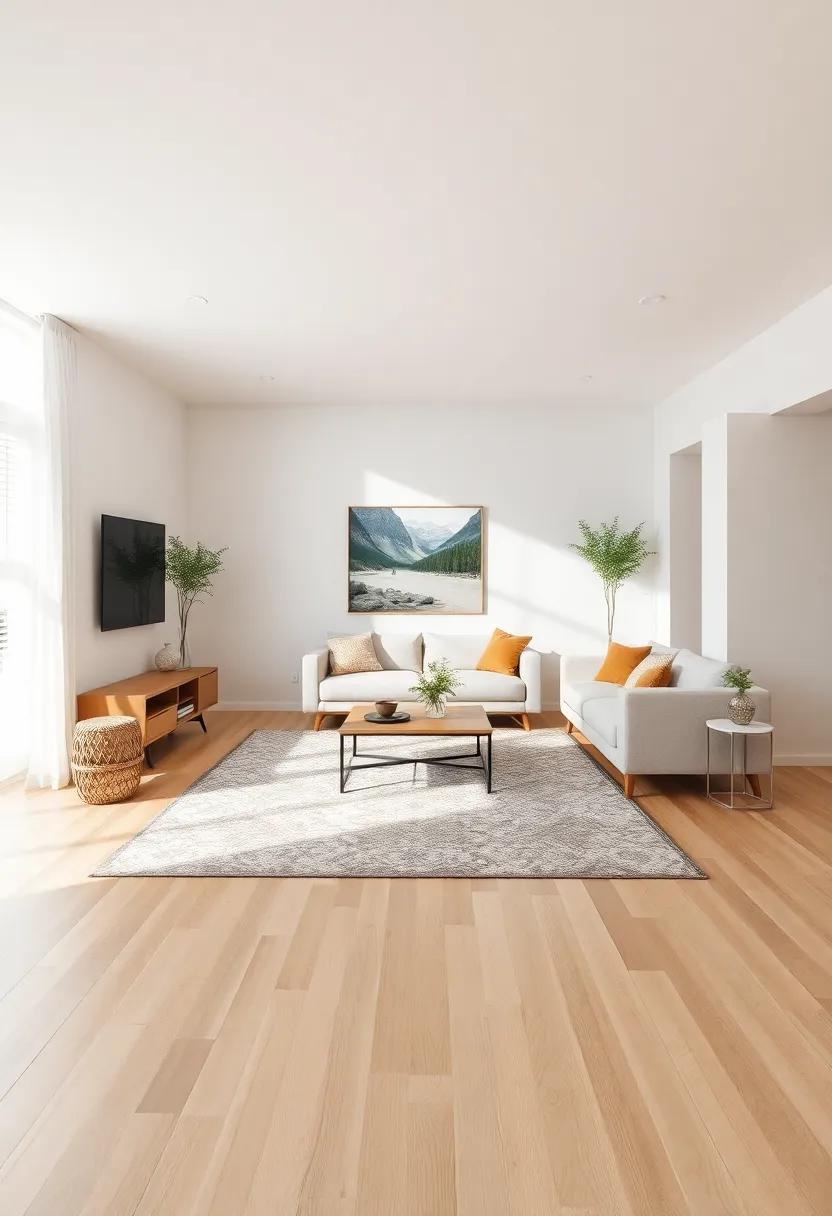
In a small open-concept living room, area rugs serve not only as decorative accents but also as powerful tools to delineate specific zones. by selecting rugs that complement your overall color scheme and style, you can visually separate areas such as the seating arrangement and dining space. Consider the following points when choosing area rugs:
- Size Matters: Ensure the rug is large enough to fit under the front legs of your furniture to create a cohesive look.
- Color Palette: Use rugs in subtle shades to enhance the light wood floors, or choose bold patterns to create a statement.
- Texture and Material: Consider the texture to add depth; soft, plush rugs are inviting in a seating area, while durable options work well in dining spaces.
Additionally, layering rugs can add complexity and warmth to your design. For instance, you might place a smaller, patterned rug on top of a larger, neutral one to create interest and define spaces even more distinctly. Keep practicality in mind by choosing materials that withstand foot traffic and are easy to clean. Here’s a simple table to summarize some ideal rug choices for various areas:
| Area | Recommended rug Type | Features |
|---|---|---|
| Seating Area | Soft, Plush | Cozy, Inviting |
| Dining Area | Durable, Low-Pile | Easy to Clean |
| Entryway | Outdoor-Indoor | Resistant to Wear |
choosing Accessories That Add Character Without Clutter
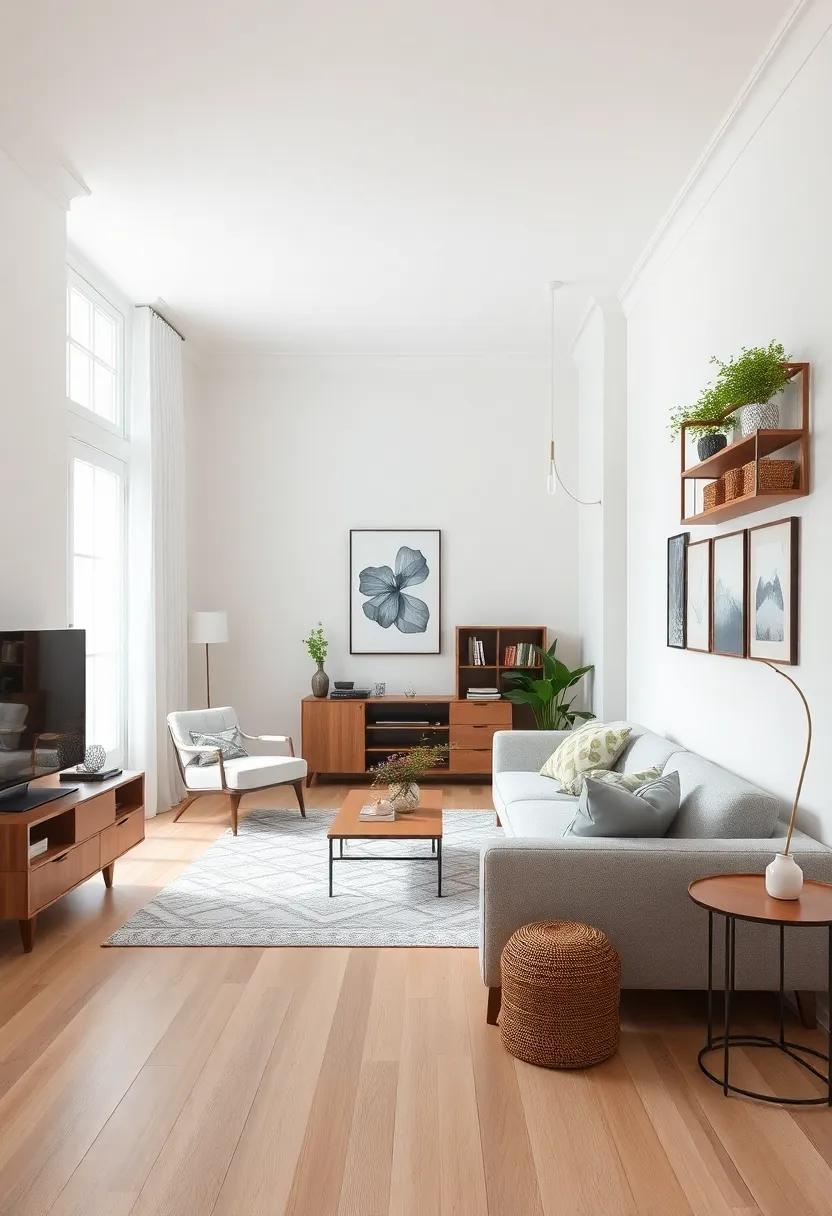
When designing a small open-concept living room, the right accessories can transform your space into a stylish retreat without overwhelming it. Opt for a few well-chosen pieces that reflect your personality and enhance the room’s functionality. Consider incorporating:
- Textured Throws: A soft, knit throw adds warmth while also serving as a pop of color against light wood floors.
- Artistic Wall Hangings: Choose a single statement piece or a cohesive gallery wall that draws the eye without cluttering the space.
- Minimalist Sculptures: select a couple of sleek sculptures that double as conversation starters and add depth to your decor.
Layering is key; use accessories to create a sense of dimension without weight. A narrow console table, for example, can hold a few decorative items along with essential storage. Use delicate greenery in simple pots to introduce life and color, strategically placing them to avoid overcrowding:
| Accessory | Impact | Placement Tips |
|---|---|---|
| Framed Prints | Create visual interest | Centered above seating |
| Accent Pillows | Add comfort | On sofas and chairs |
| Unique Lighting | set the mood | Floor or table lamps |
Incorporating Vertical Storage Solutions to save Space
Vertical storage solutions are an innovative way to maximize the utility of a small open-concept living room without compromising on style. By thinking beyond traditional horizontal layouts,you can transform walls into efficient storage spaces. This not only frees up valuable floor area but also showcases your décor. Consider incorporating:
- wall-mounted shelves: Perfect for books, plants, or decorative items.
- Tall cabinets: Ideal for additional storage while drawing the eye upwards.
- Over-the-door organizers: A functional and stylish approach for smaller items.
- Hooks and pegboards: Great for hanging items like hats or bags, keeping them accessible yet off the floor.
When selecting vertical storage options, it’s crucial to maintain a cohesive look that complements your light wood floors. Neutral colors or natural wood finishes can enhance the airy feel of the space. To help visualize the best placement and design choices, here’s a simple table to guide your selections:
| Storage Type | Advantages | Recommended Style |
|---|---|---|
| Wall-mounted shelves | Space-saving, customizable | Floating design for a minimalistic look |
| Tall cabinets | Maximizes verticality, offers closed storage | Shaker or mid-century for a classic vibe |
| Over-the-door organizers | Utilizes frequently enough-wasted space | Fabric or wire, based on personal aesthetics |
| Hooks and pegboards | Versatile and functional | Painted finishes to add a pop of color |
The Power of Mirrors in Expanding Visual Areas
Mirrors are not just functional elements; they are transformative tools in the realm of interior design. When placed strategically, mirrors can create an illusion of spaciousness by reflecting light and visually expanding the area.In a small open-concept living room,using mirrors can amplify natural light from windows,making the space feel airier and brighter. Consider adorning a focal wall with a large, decorative mirror or arranging a series of smaller mirrors to create a captivating gallery wall that draws the eye upward and beyond.
To maximize their impact, think about the following elements when incorporating mirrors into your design:
- Placement: Position mirrors across from windows or light sources to capture and reflect as much light as possible.
- Size: Choose larger mirrors for a bold statement or smaller mirrors to create visual interest and depth.
- Framing: Use frames that complement your decor style—whether sleek and modern or ornate and traditional—to enhance the aesthetic appeal.
By creatively integrating mirrors into your small living space, you not only enhance its functionality but also invite a play of light and reflections that enriches the atmosphere.
Color and Texture Play: Balancing Elements in Small Living Rooms
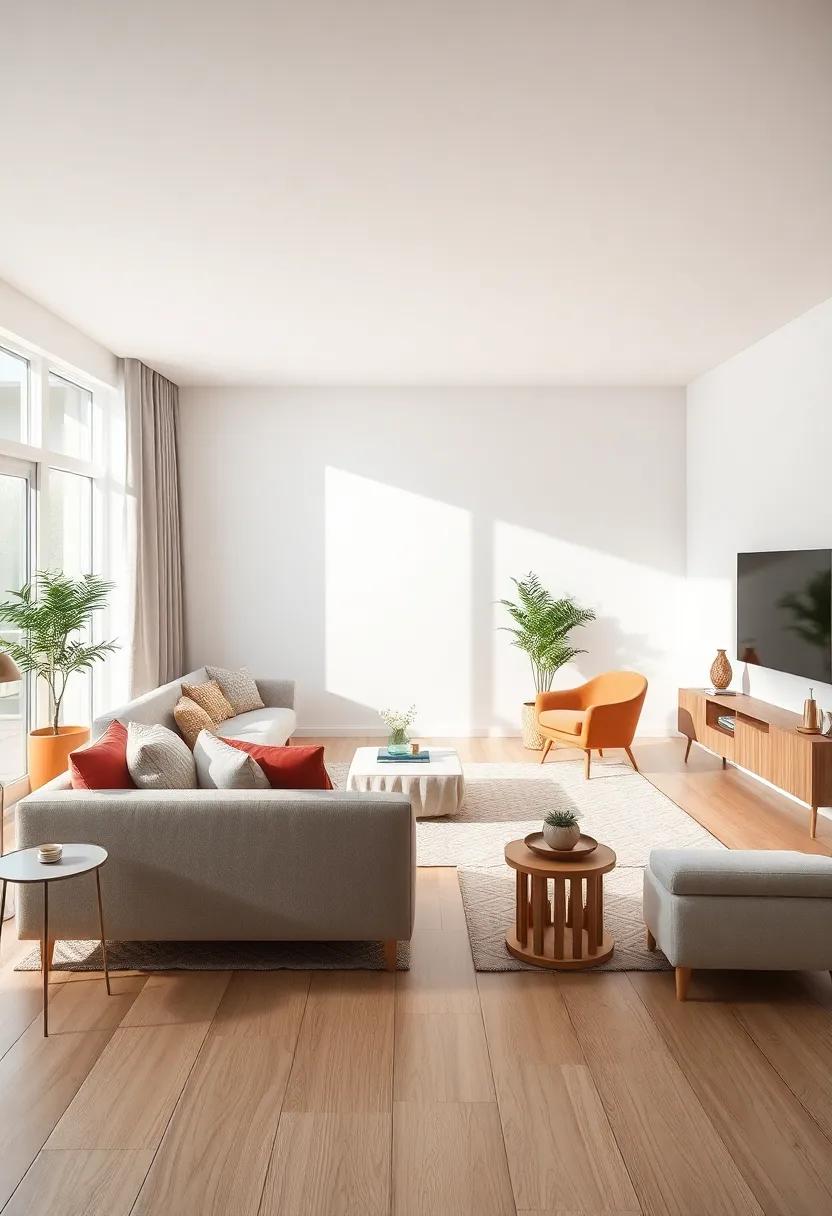
When designing a small open-concept living room, the interplay of color and texture is crucial in creating an inviting atmosphere that doesn’t feel cramped.Utilize a harmonious color palette that enhances the natural light from your light wood floors. Shades of soft whites, muted pastels, and earthy tones can create an illusion of spaciousness. Incorporate textures through various materials like plush cushions, knitted throws, and woven wall hangings to add depth and interest without overwhelming the space. Consider the following elements to achieve a balanced look:
- Accent Colors: Choose one or two bold colors for accent pieces, such as pillows or artwork, to infuse personality.
- Contrasting textures: Mix smooth surfaces with rougher textures; for instance, pair a sleek coffee table with a soft area rug.
A thoughtful approach to layering textures can transform your living room into a cozy retreat. By incorporating materials like natural fibers, wood accents, and metallic finishes, you can create visual intrigue that leads the eye around the room. A well-chosen area rug can delineate separate zones within the space, helping define the living area while contributing warmth underfoot. Consider a table layout like this for a textural balance:
| Element | Material | Purpose |
|---|---|---|
| Couch | Soft Fabric | Makes the space inviting |
| Coffee Table | glass/Wood | Adds elegance and lightness |
| Rug | Wool or Jute | Brings warmth and comfort |
Designing a Focal Point in an Open Living Room Setting
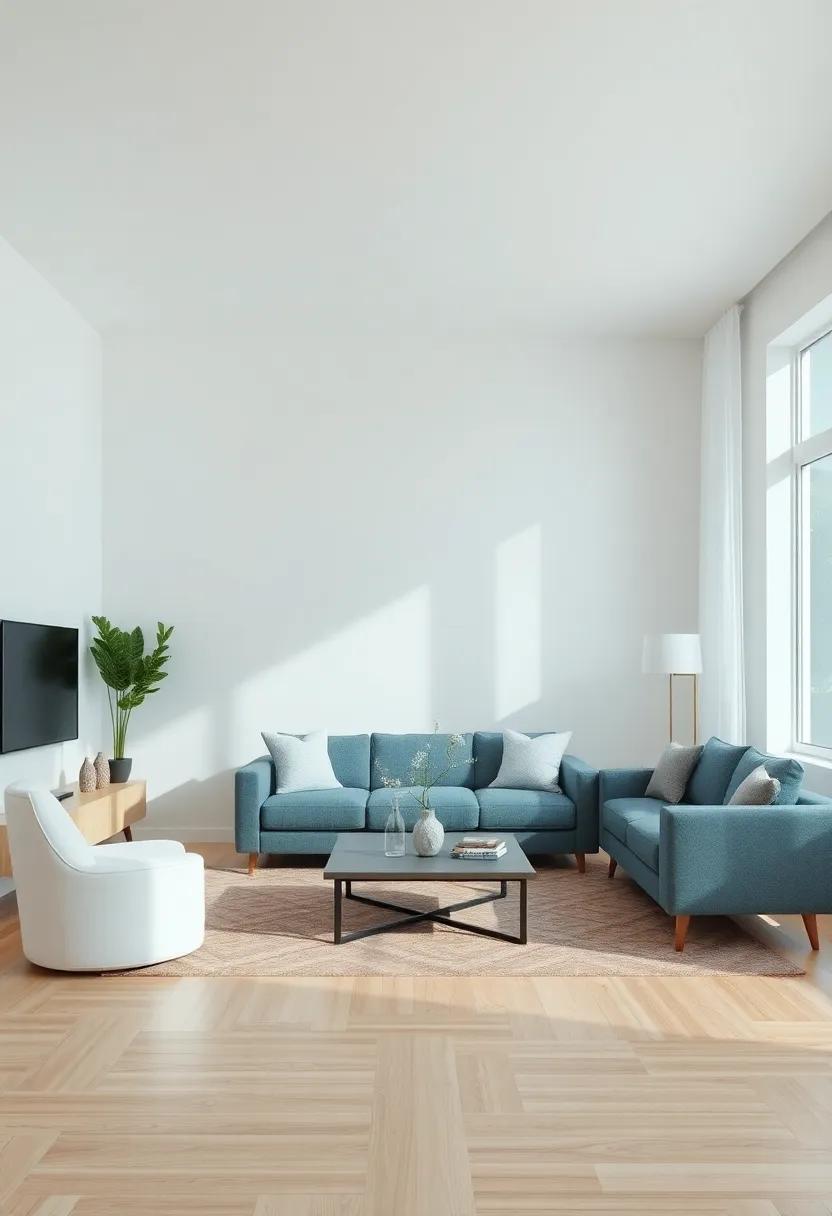
creating a striking focal point in a small open-concept living room requires a blend of creativity and thoughtful design. A well-placed piece of furniture, such as a bold accent chair or a stylishly patterned area rug, can draw the eye and anchor the space. Incorporating elements like a unique coffee table or an artfully designed side console adds both functionality and visual interest. When selecting these features, consider using lighter hues or textures that complement the light wood floors, enhancing the overall aesthetic while maintaining an airy feel.
Art plays a pivotal role in defining the room’s character. Opt for a large wall mural or a series of framed prints in vibrant colors that can effortlessly capture attention.Grouping artwork in clusters or incorporating a well-designed gallery wall can create depth and intrigue without overwhelming the space. Additionally, consider integrating greenery through plants or floral arrangements that can provide a touch of life and freshness, harmonizing beautifully with the lighter tones of the wooden floors. Remember, the goal is to create a space that feels cohesive, where each element complements the other while clearly defining the living area.
Integrating Plants for a Fresh and Inviting ambiance
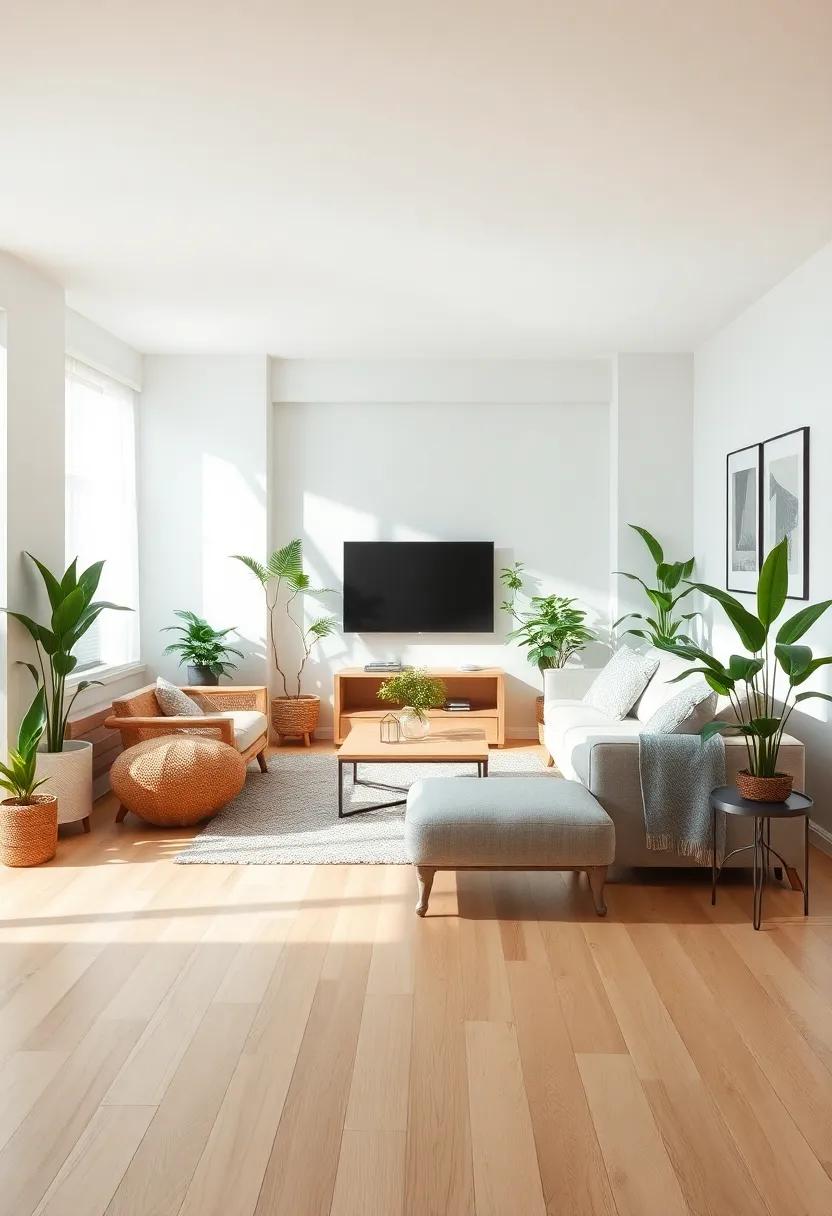
Incorporating greenery into an open-concept living space can dramatically enhance its atmosphere, making it feel more vibrant and alive. By strategically placing plants throughout your room, you not only create a visual focal point but also infuse the air with freshness and improve overall well-being. Here are some recommended plants that thrive indoors and add character:
- Snake Plant - Low maintenance and air-purifying.
- Pothos – Versatile and great for draping or climbing.
- Fiddle leaf Fig - A statement piece with large, stunning leaves.
- Peace Lily - Elegant flowers and purifies the air.
- Succulents – Perfect for small spaces, adding charm without requiring much light.
To maximize visual appeal, consider arranging plants at varying heights. Utilizing floating shelves, plant stands, or even hanging planters creates an engaging layered effect.A well-placed table can also serve as a captivating feature, showcasing a collection of smaller plants.Here’s a simple chart to help you pick the right potting options:
| Plant Type | Recommended Pot Size | Ideal Light Conditions |
|---|---|---|
| Snake Plant | 6-8 inches | Low to Medium Light |
| Pothos | 4-6 inches | Medium to Bright Light |
| Fiddle Leaf Fig | 10-12 inches | Bright, Indirect light |
| Peace Lily | 8-10 inches | Low to Medium Light |
| Succulents | 3-4 inches | Bright Direct Light |
Welcoming Natural Elements for a Harmonious Living Space
Incorporating natural elements into your open-concept living space can create a serene and inviting atmosphere that enhances both comfort and style. Light wood floors serve as a perfect foundation, echoing the organic feel of nature. To complement these floors, consider introducing materials such as woven textures and natural fibers through furniture and decor. Adding plants like succulents, ferns, or snake plants not only cleans the air but also adds a splash of vibrant green, which can energize the space. Layering different materials—like a soft jute rug beneath a sleek coffee table or a wicker basket for storage—creates depth and visual interest without overwhelming the small area.
Natural light plays a crucial role in harmonizing your design with the outdoors. Strategically placed mirrors can amplify sunlight, making the room feel larger and brighter. Choose window treatments that allow light to filter through while ensuring privacy—sheer drapes or bamboo shades can work wonders. Additionally, integrate a color palette inspired by nature: soft earth tones, warm greens, and gentle blues can evoke a calming effect. To tie everything together, opt for artwork and decorative elements that reflect the beauty of the natural world, such as landscape prints or sculptures made from reclaimed wood, creating a cohesive space that feels both modern and grounding.
Lighting Techniques That Elevate the Open Living Experience
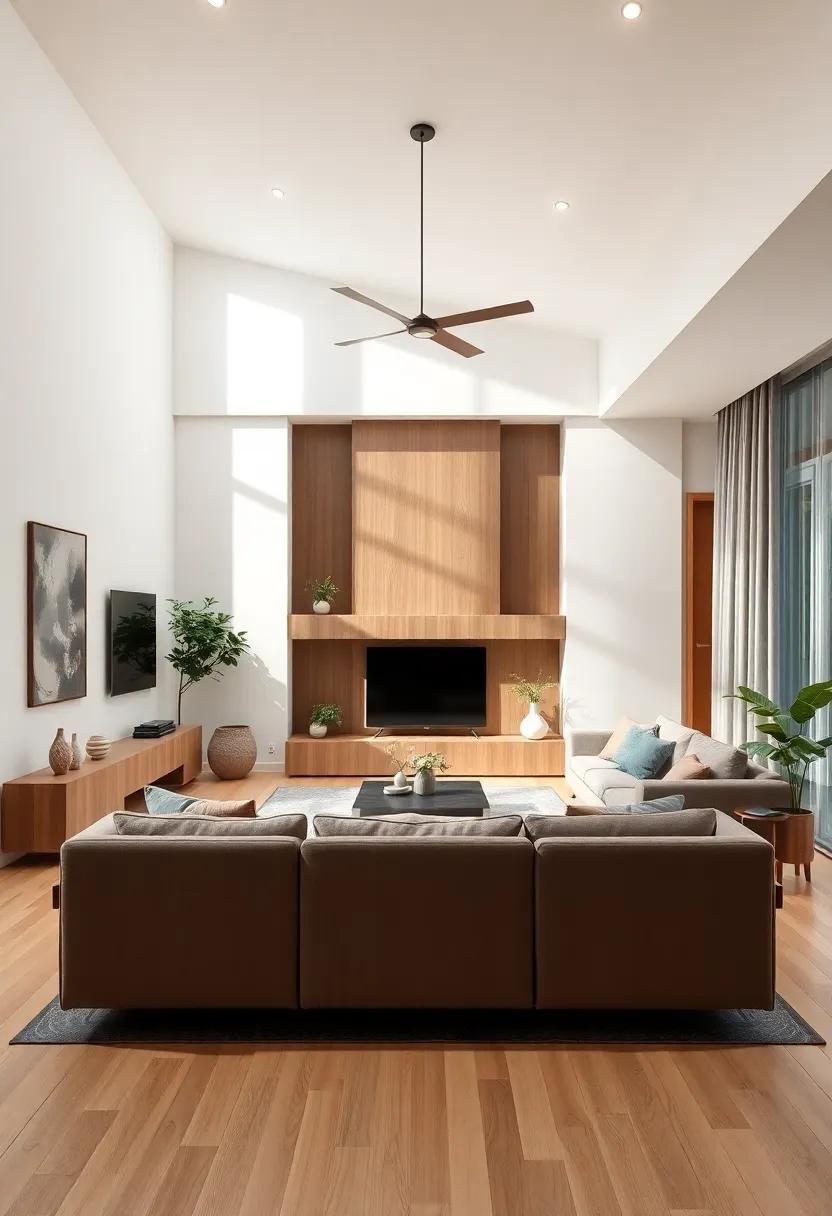
Utilizing effective lighting techniques can transform a small open-concept living room into a spacious haven. Start by incorporating layered lighting, which combines various sources to create depth and atmosphere. Consider the use of:
- Ambient Lighting: Ceiling fixtures or recessed lights provide overall illumination.
- Task Lighting: Floor lamps or table lamps help focus light on specific areas, like reading nooks.
- Accent Lighting: Highlight artwork or architectural features with strategically placed fixtures.
In addition to using multiple sources, the color temperature of the light can enhance the feeling of openness. Opt for warm white LEDs to foster a cozy environment while maintaining visibility. Furthermore, consider using dimmers, which allow you to adjust the intensity of light according to the time of day or occasion. For an organized approach, refer to the table below that outlines various lighting options and their effects:
| Lighting Type | Purpose | Ideal Location |
|---|---|---|
| Ceiling Fixtures | General illumination | Center of the room |
| Floor Lamps | Task lighting | Near sofas or chairs |
| Wall Sconces | Accent lighting | Flanking artwork or mirrors |
Crafting a Cozy Nook for Relaxation in a Compact Living Area
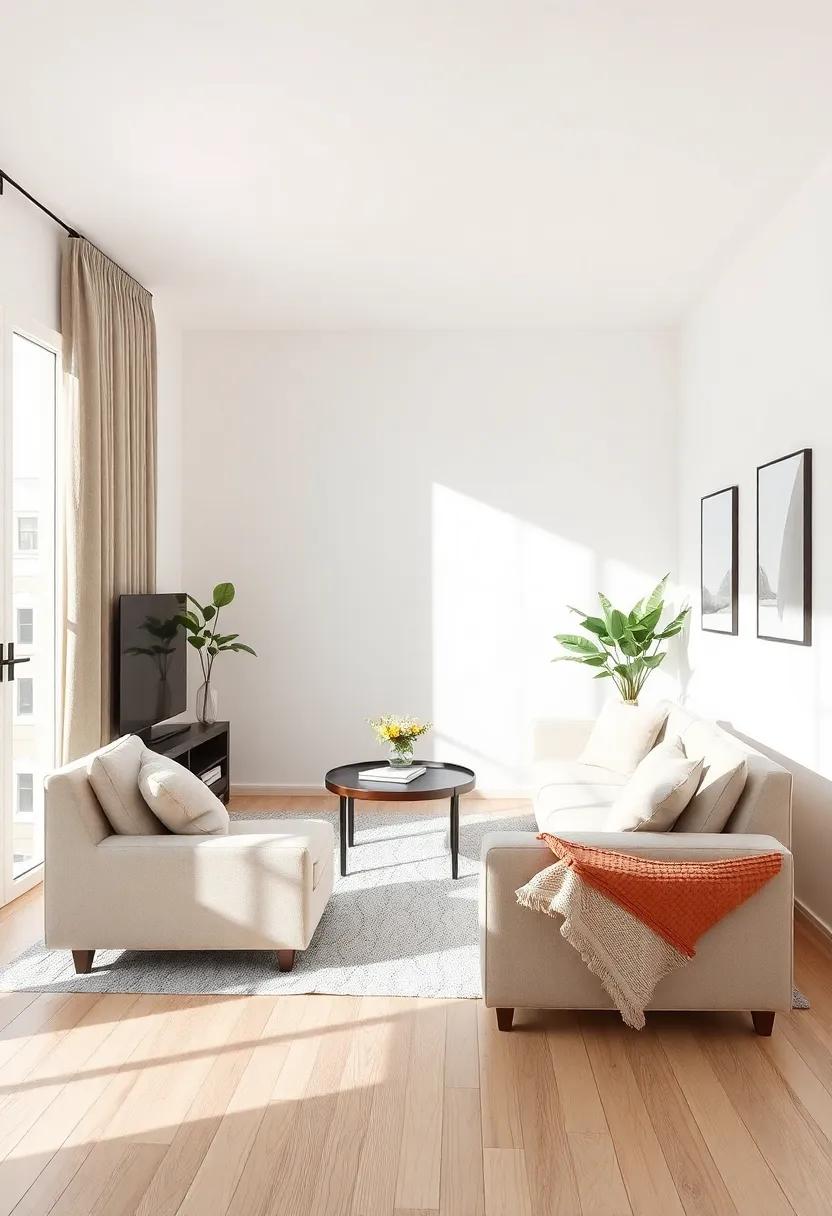
Transforming a small corner of your open-concept living space into a haven of relaxation can be both simple and rewarding. Start by selecting a comfortable chair or a chic bean bag that invites you to unwind.Layer textures with a soft throw blanket and accent pillows in neutral or calming tones to enhance the cozy vibe. Consider a small side table within arm’s reach for your favorite book,a cup of tea,or a scented candle. Soft ambient lighting, perhaps from a stylish floor lamp, can create a warm atmosphere, encouraging you to retreat into your nook whenever you need a break from the hustle and bustle.
Utilize horizontal space to maintain an airy feel while adding personality to your cozy nook. Incorporate shelves or wall-mounted storage to house books,plants,or decorative items without cluttering the floor.Add a touch of greenery with low-maintenance indoor plants that thrive in less light, enhancing the overall aesthetic. A modest rug can definitely help define the area, anchoring the space without overwhelming it. The key lies in harmonizing functionality with comfort, ensuring your personal retreat remains a serene escape in your compact living area.
To Conclude
As we conclude our exploration of embracing space in the design of small open-concept living rooms, it’s evident that the right choices can transform any area into a vibrant and inviting sanctuary. Light wood floors serve as a versatile foundation, enhancing the perception of openness while providing a warm backdrop that harmonizes with various design elements. By thoughtfully selecting furniture, optimizing layouts, and incorporating strategic accents, you can craft a cohesive and aesthetically pleasing atmosphere that maximizes both functionality and style.
In a time when our homes are ever more central to our lives, embracing the principles of open-concept living is not just about aesthetics; it’s an invitation to enhance our daily experiences. As you embark on your design journey, remember that every small space holds untapped potential, ready to flourish with creativity and intentionality. So,gather your inspirations,channel your unique style,and let your living room bloom with possibility. your haven awaits, and within its walls, creativity knows no bounds.
